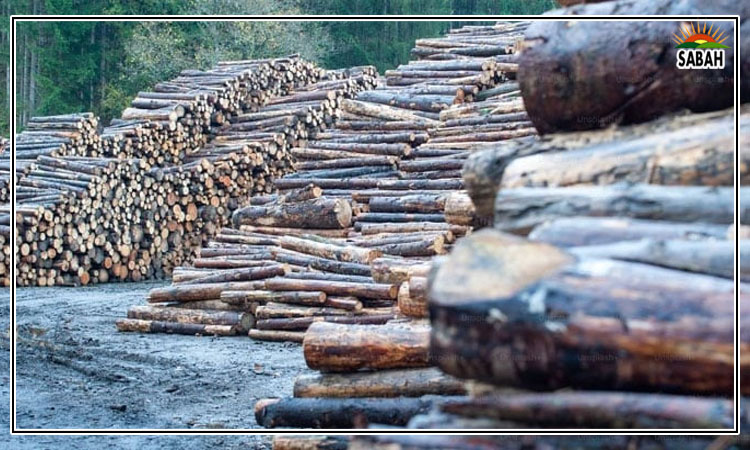A ‘Made in Pakistan’ future…By Nadeem Javaid
Exporting is a proven path to growth, yet achieving dominance in international markets is a feat that only a handful of firms master. What sets these exceptional firms apart? How do they crack the code of global success while so many others struggle to gain a foothold?
We explore the key strategies that enable firms to excel, and the mindset needed to thrive in an ever more competitive global landscape. It also examines how Pakistani firms – navigating economic challenges – can draw lessons from these global leaders to unlock their own potential.
Exporting isn’t simply about sending products across borders; it’s about embedding those products into the fabric of foreign markets in a way that makes them desirable. Companies that achieve this kind of dominance aren’t merely lucky. They are strategic, adaptable, and resilient. They select their markets with exact precision, innovate relentlessly, and leverage every opportunity to align their brands with local sentiments. This is the story of firms that succeed in exporting – and how Pakistani businesses can learn from their playbook.
Imagine a mid-sized firm looking to expand its horizons beyond its saturated domestic market. The company’s leadership knows that international growth is essential for long-term sustainability, but the path ahead is fraught with challenges. Successful exporters understand that choosing the right market is crucial. Instead of spreading themselves thin by entering numerous countries simultaneously, they focus their efforts on select regions where their products can thrive. This is not a matter of guesswork but of meticulous planning – considering market size, cultural alignment, and regulatory barriers.
But choosing the right market is only the beginning. Once there, these companies invest heavily in understanding local consumer preferences. They recognise that the world is not a monolith. Tastes differ widely from Karachi to Copenhagen, and firms that dominate exports make it their mission to align their offerings with local values. They localise not just their products but also their messaging, tapping into cultural nuances to foster loyalty and trust among new customers. When you see how some firms successfully adapt their marketing strategies, you realise that exporting is as much about building relationships as it is about selling products.
In today’s hyper-connected world, innovation is the true differentiator. Firms that rise to the top in global markets continuously find ways to stay ahead of the curve. It’s not just about creating better products; it’s about streamlining operations, optimising supply chains, and leveraging data to anticipate market shifts. Technology plays a pivotal role here, allowing companies to cut costs, enhance efficiency, and maintain a reputation for reliability. This is especially important in a time when consumers expect products to arrive faster and cheaper, no matter where they’re shipped from.
However, cracking the code of export dominance often means knowing when to collaborate. Firms that excel in new markets don’t go it alone; they build strategic partnerships with local distributors, suppliers, and sometimes even competitors. Through alliances, joint ventures, or licensing agreements, these companies quickly gain the insights and networks necessary to navigate the complexities of foreign markets. This collaborative approach reduces risks and speeds up their ability to scale in unfamiliar territories, making the process of market entry much smoother.
Adaptability is another hallmark of firms that achieve export success. The global marketplace is, by its nature, unpredictable. Political changes, economic downturns, or supply chain disruptions can throw even the most well-thought-out strategies into disarray. But companies that dominate exports are resilient; they pivot quickly in response to changing conditions. They understand that setbacks are not just inevitable but are also opportunities to refine their strategies. This mindset is crucial in today’s volatile world, where flexibility is as important as foresight.
But let’s turn to Pakistan, where the story is markedly different. Pakistani firms have the talent and potential to succeed internationally, but they face an uphill battle. The challenges aren’t just internal – they are deeply rooted in the country’s macroeconomic environment. Pakistan’s taxation system, for instance, is heavily skewed toward import duties, with customs taxes accounting for nearly half of the country’s tax revenue. This structure inadvertently punishes exporters by inflating the costs of imported raw materials needed for production. For a business already operating on thin margins, these added expenses can be crippling.
And then there’s the issue of the Pakistani rupee, which has depreciated sharply in recent years. While, in theory, a weaker currency could make exports more competitive, the reality is that inflation has driven up the cost of inputs, offsetting any potential gains. Exporters are left in a difficult position: either absorb the increased costs and erode their margins or pass them on to buyers, risking their price competitiveness in foreign markets.
One of the less-discussed but equally crucial barriers is Pakistan’s country-of-origin label. In a crowded global marketplace, export performance is often determined by the ‘reputational comparative advantage’ instead of technological or factor endowment differences alone. While ‘Made in Germany’ or ‘Made in Japan’ signals quality and reliability, ‘Made in Pakistan’ often struggles to evoke similar positive associations, especially in non-traditional markets. This negative perception makes it harder for Pakistani firms to break through and command premium prices, even when their products are of comparable quality.
For Pakistani firms, improving their country’s reputation abroad could unlock new opportunities. By focusing on enhancing product quality and aligning with international standards, companies can start to redefine what it means to be ‘Made in Pakistan’. It’s about playing the long game – investing in quality improvements, obtaining globally recognised certifications, and leveraging Pakistan’s rich cultural heritage to build unique brand identities. Imagine a world where ‘Made in Pakistan’ becomes synonymous with quality craftsmanship, ethical production, and innovation. That’s not just a pipe dream – it’s an achievable goal if firms and the government seriously work together.
Undeniably businesses can’t do it alone. The government has a critical role to play for national branding besides creating an environment that supports exporters rather than stifles them. A fundamental shift in policy is needed – one that reduces reliance on import duties, broadens the tax base, and incentivises research and development. Offering tax credits or grants for innovation can empower firms to make necessary capital investments, ultimately enhancing their competitiveness on the global stage.
Looking forward, there are clear strategies for Pakistani firms to crack the code of export dominance. At the core of this strategy is improving the intensive margins – enhancing the value and volume of exports by existing firms. This means investing in better design, branding, and compliance with international standards. It also involves embracing advanced manufacturing techniques, such as automation and digital tools.
At the same time, firms must also explore the extensive margins, diversifying into new markets and product lines. Pakistan’s exports are overly reliant on a few key markets, primarily in the US and Europe. But there are untapped opportunities in regions like Africa, Central Asia, and East Asia, particularly under the China-Pakistan Economic Corridor (CPEC). By exploring these emerging markets and expanding product offerings, Pakistani firms can reduce their vulnerabilities and open new revenue streams.
Ultimately, achieving export dominance isn’t just about producing a superior product; it’s about having the resilience, agility, and strategic vision to thrive in ever-changing global markets. Companies that master this art understand that success abroad requires more than just a willingness to take risks – it requires a deep commitment to understanding the world beyond their borders, a willingness to adapt, and the vision to build lasting global brands.
For Pakistani firms, the journey may be challenging, but with the right blend of strategy, innovation, and government support, they too can claim their place on the global stage.
Courtesy










